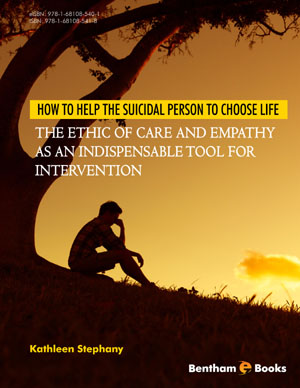Abstract
In chapter four we became aware that people who are experiencing suicidal thoughts feel especially alone in their experience. If we can help them to know that we genuinely care about them and their situation, we may be able to convince them that their life matters. This is the essence of the ethic of care in action. Empathic responses, in the form of validating another’s experience, can also save lives. Specifically, in the hopeless patient, increased hope is instilled if they feel understood and cared for by their physician or nurse. Explicit aspects of the ethic of care and empathy were identified as a means to help the suicidal person to choose life. These strategies include: establishing connection, fostering a therapeutic alliance, offering unconditional positive regard, heartfelt listening, presencing and compassion. It was pointed out that trust can sometimes be severed in the emergency room (ER) when someone presents with a suicide attempt. For example, suicidal persons are often not even considered as real patients because they are not injured or ill. Key aspects of The Guidelines for Clinicians developed by The Aeschi Working Group of suicidologists were reviewed. These guidelines emphasized the significance of the therapeutic alliance between the clinician and patient. They highlighted the importance of offering empathy and of being non-judgmental and placed the patient’s story as a priority over clinical expertise. We also learned that after a suicide attempt has occurred there is often a window where a patient can be reached. A touching narrative case study was reviewed where we discovered how a total stranger helped a suicidal youth through an act of compassion. A psychological autopsy followed this story and assisted us in gaining a retrospective view of what went wrong in the ER and why. Key themes emerged. The patient experienced the narrow constriction of thought associated with psychache. The ER physician admitted that she did not receive adequate training in suicide risk assessment. The patient reported that he did not feel cared for by the professionals in the ER, and prior to the patient being discharged no care plan was put in place to ensure that they would be safe. We learned that after the initial suicidal crisis has subsided, Cognitive Therapy may help the person to find a sense of purpose and meaning in their life. A dynamic simulation exercise was recommended to help gatekeepers practice being empathetic with a suicidal patient. The role play encouraged the use of both non-verbal and verbal empathic communication skills. At the end of the chapter, caregivers were encouraged to make empathy a habit through the act of journaling to increase self-awareness.
Keywords: Care plan, Clarification, Cognitive Therapy, Cognitive Behavioral Therapy, Cognitive re-structuring, Compassion, Connecting, Constriction of thought, Coping cards, Empathy, Exquisite empathy, Journaling, Listening, Listening stoppers, Mindful listening, Non-verbal communication skills, Open-ended question, Para-phrasing, Presencing, Psychache, Role play, Safety Plan, Self-awareness, Simulation, The Aeschi Working Group, The ethic of care, The International Association for Suicide Prevention (IASP), Therapeutic alliance, Trust, Unconditional positive regard, Validation, Verbal communication skills.






















